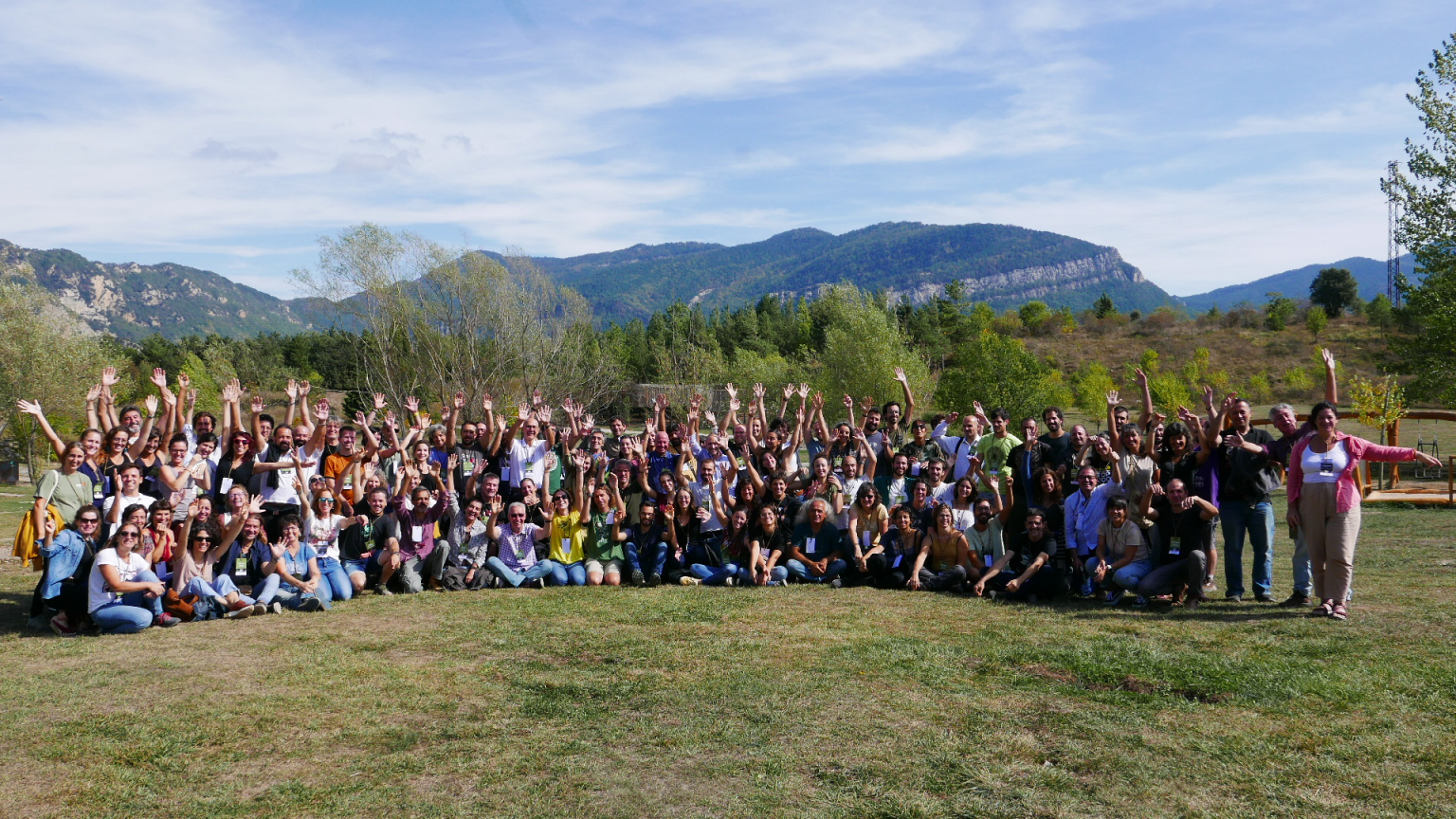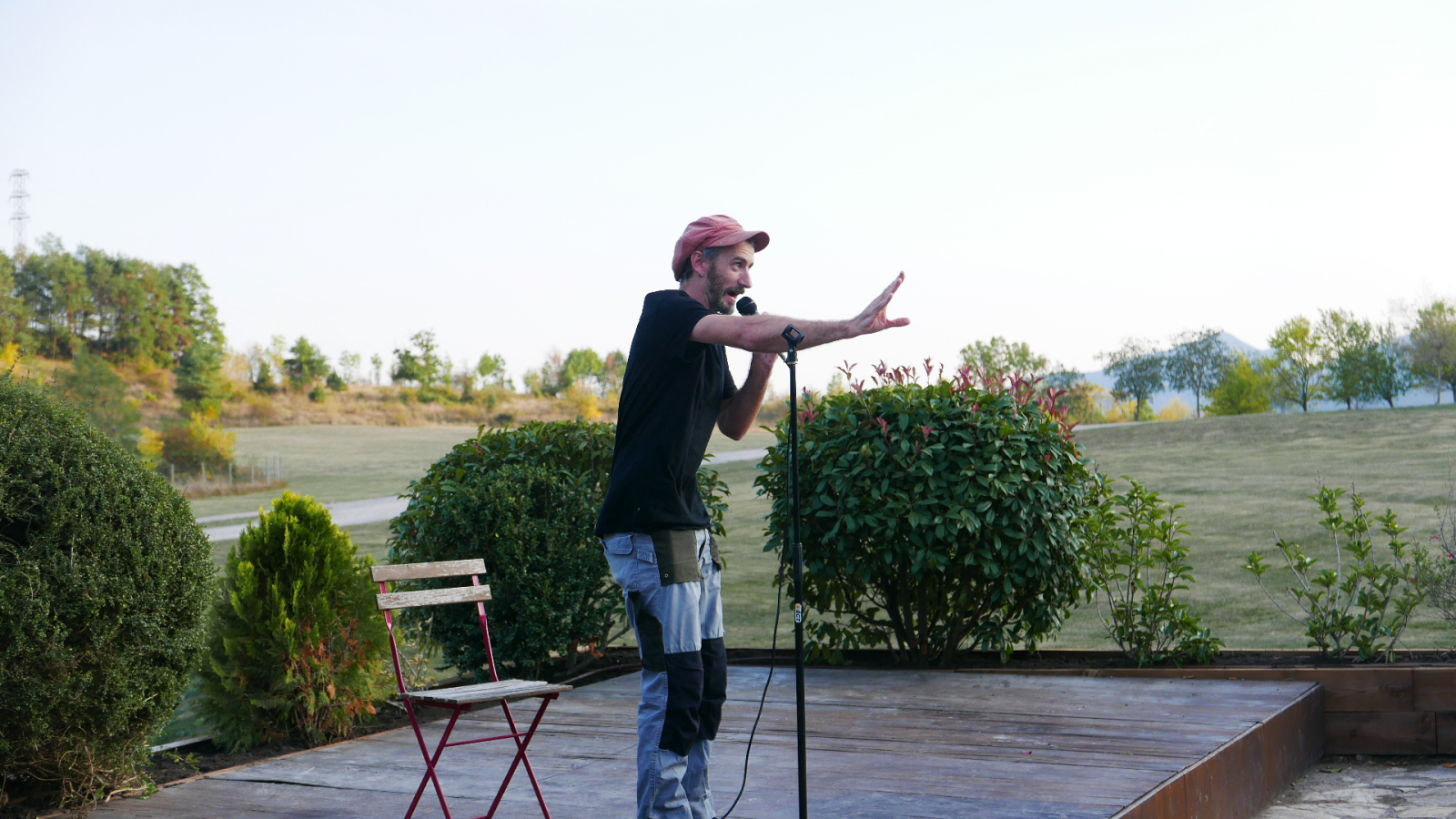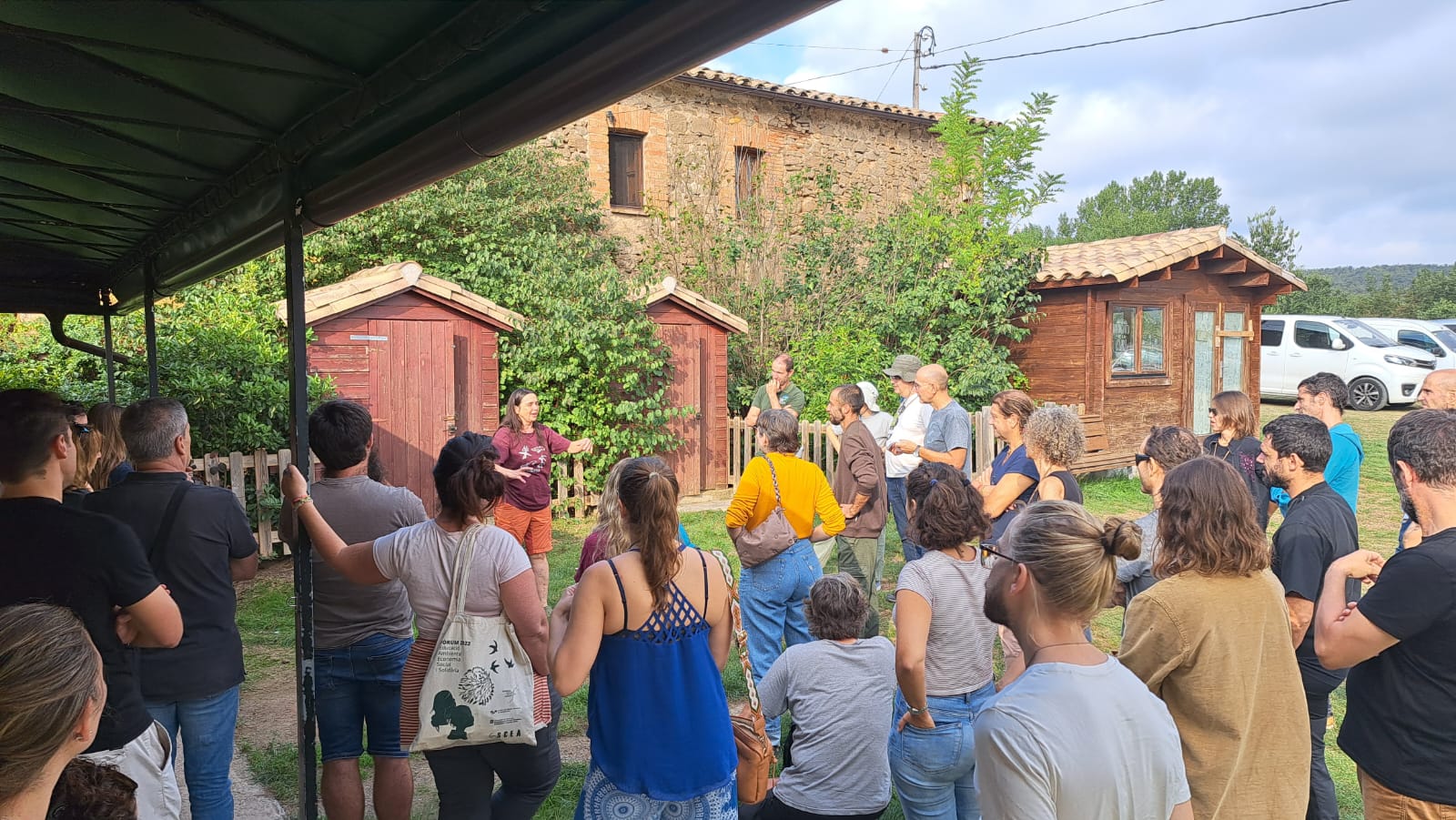Meeting again with collaborators and colleagues, networking, brainstorming, inspiring talks, discovery of success models, and enjoying diversity, humour, music… during the Congress of Nature Conservation, organised by the Catalan Network for Nature Conservation between October 2 to 4 2023, in the wonderful surroundings of Jou Nature in Guardiola de Berguedà (Catalonia), more than 140 people (re)gathered, representing environmental NGOs, public administrations, enterprises, and research centres working for the improvement of the country’s biodiversity.
The Congress began with the words of Marc Vilahur, the General Director of Environmental Policies and Natural Environment of the Government of Catalonia. He highlighted the role of active citizens and the environmental third sector to extend nature conservation beyond the limits of public administration and the importance of aligning strategies. Derived from Montreal pledges, the Government of Catalonia must ensure that, before 2030, at least 30% of the territory is conserved and effectively managed. A mission that “must be co-managed by the public administration and environmental NGOs”, as the Director said.
In the opening session, Celsa Peiteado, responsible of the food programme of WWF Spain, stressed the importance of networking and cooperation to face global challenges, as pandemics, wars for energy and world grain supply, the soaring costs and prices of food, or the climatic and ecological emergency. The WWF programme works in two different lines to promote food systems to be fair with the people and planet: through advocacy actions to reach an agroecological transition and building alliances with other stakeholders, such as the Spanish coalition “Por Otra PAC”, as well as by directly influencing the markets and food supply chains with a coordinated action at the national, European, and international levels.
Why do we want to communicate? How do we define ourselves? Who do we want to reach? How do we work with the media? During the communication workshop, led by Anna Ramon and Verònica Couto from CREAF, we asked these and more questions and found successful strategies to disseminate our work in nature conservation. Content planning, interaction enhancement in social media, and prioritising quality over quantity were key elements of the session.
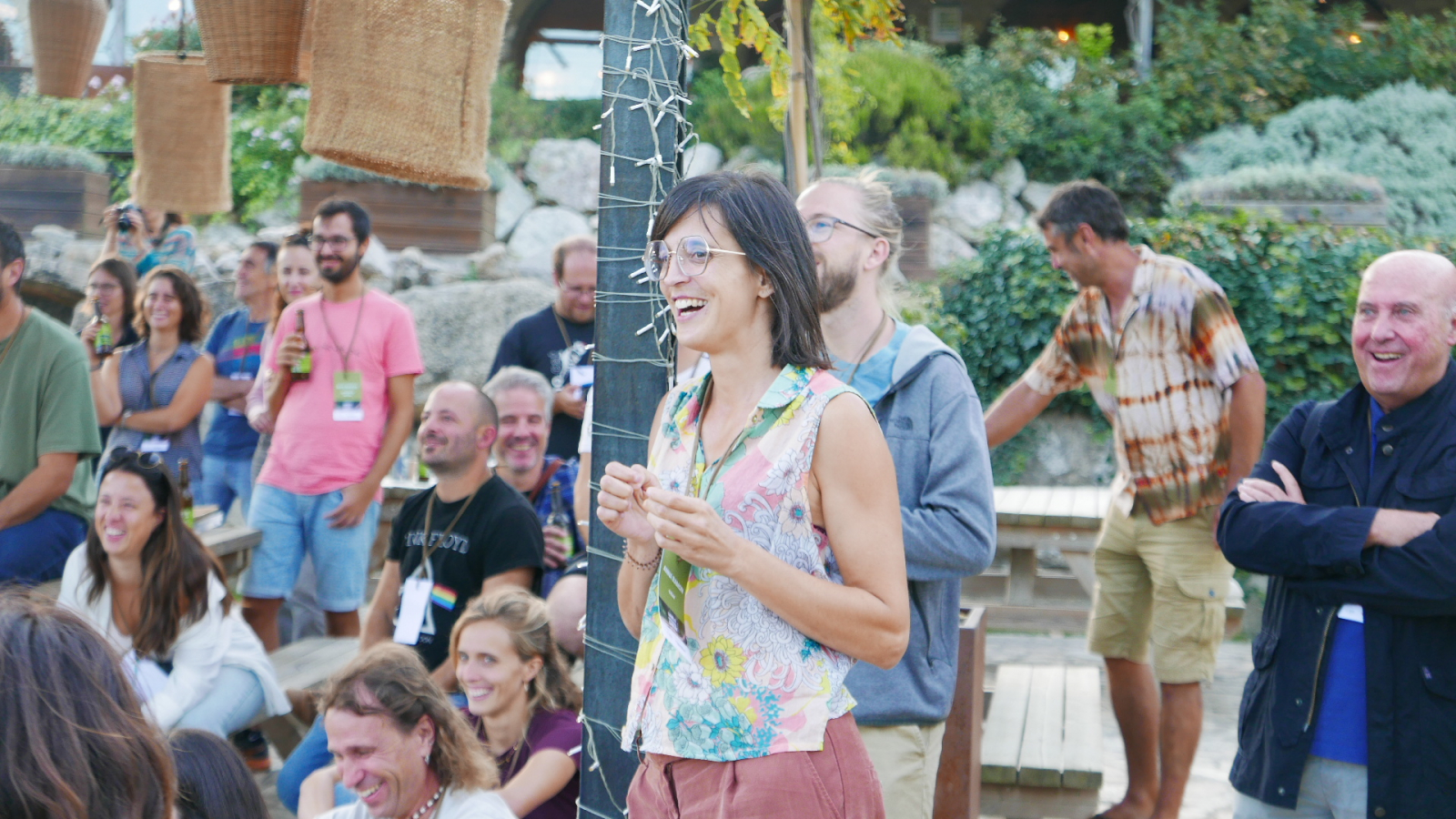
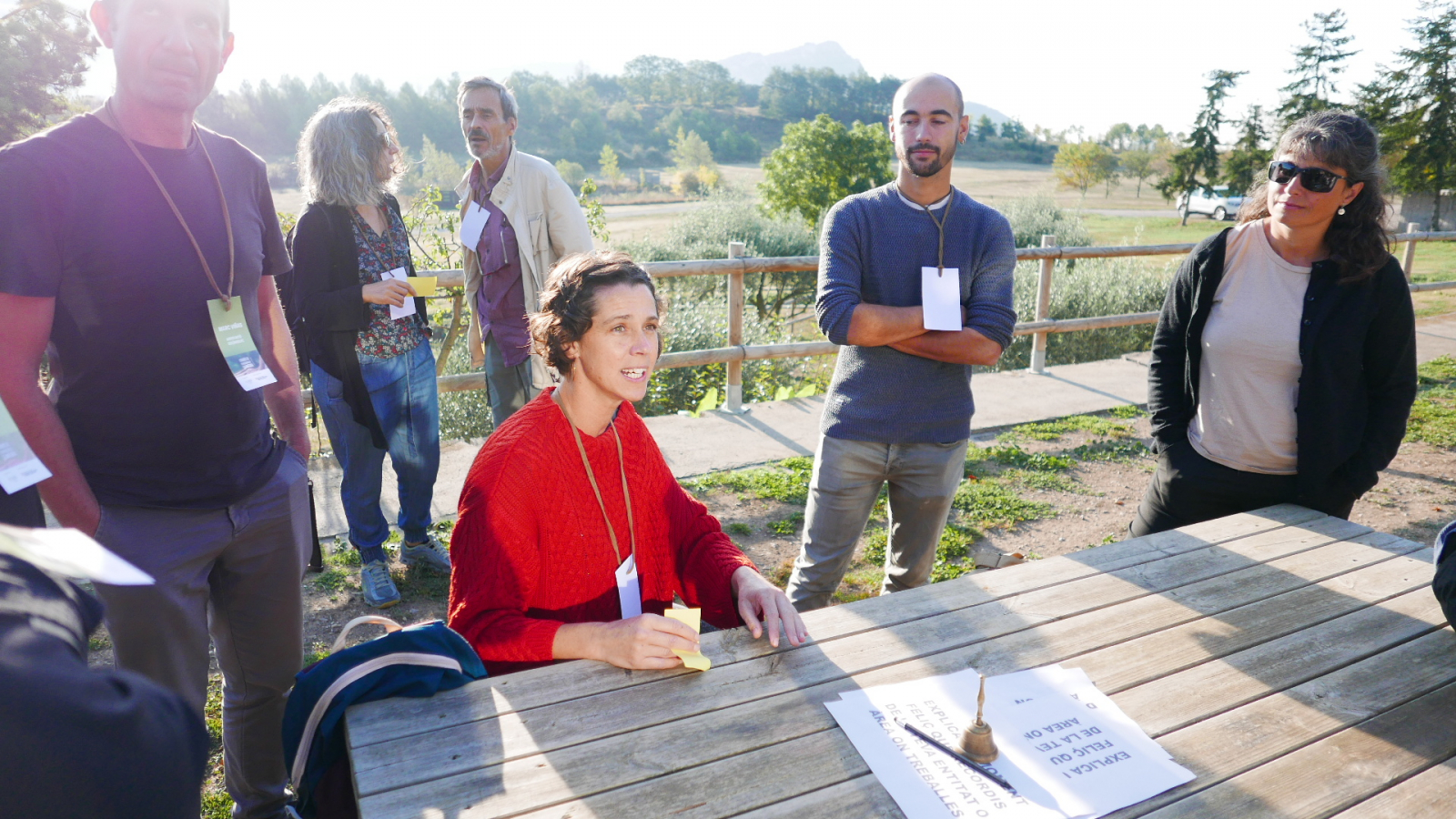
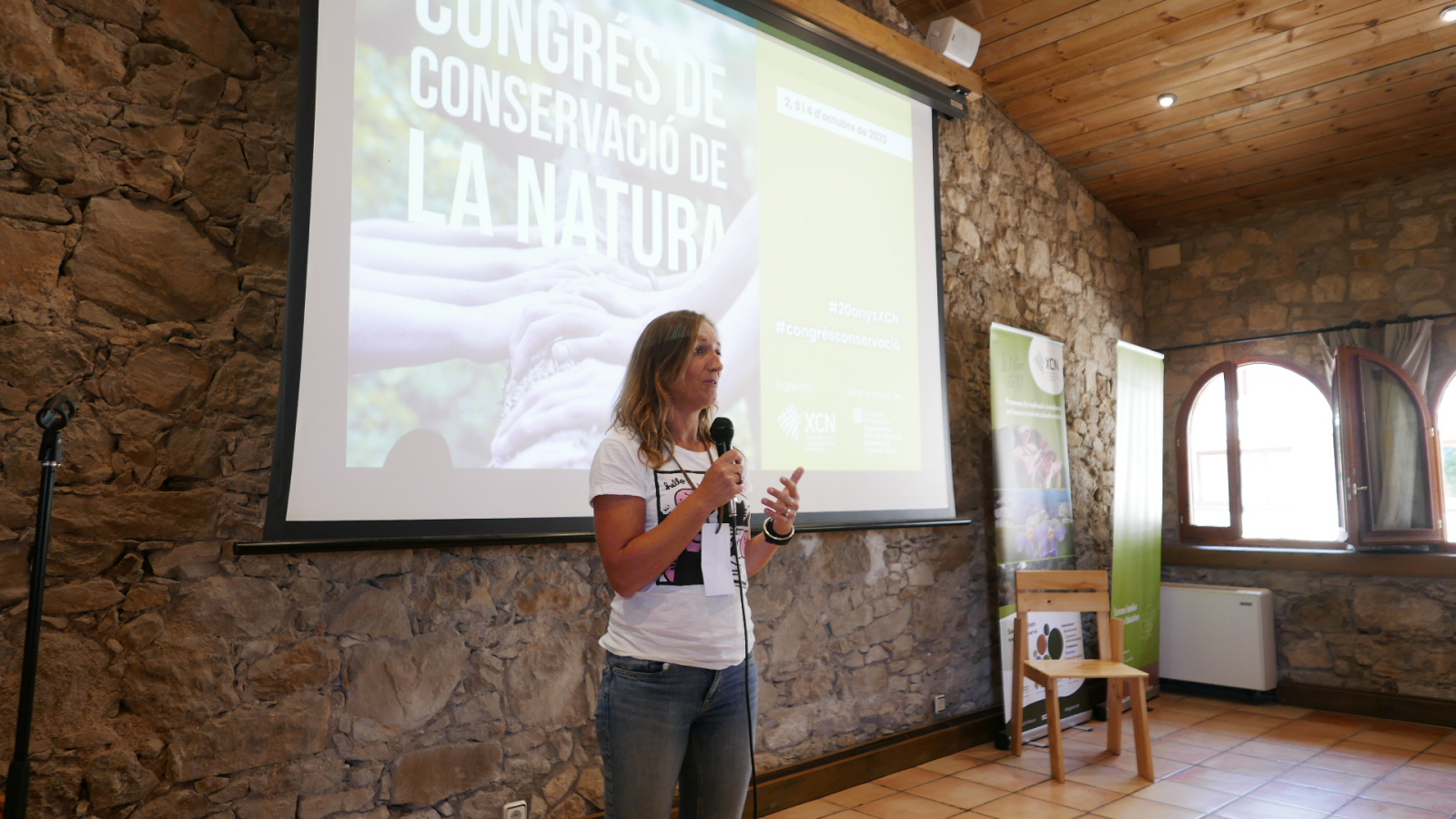
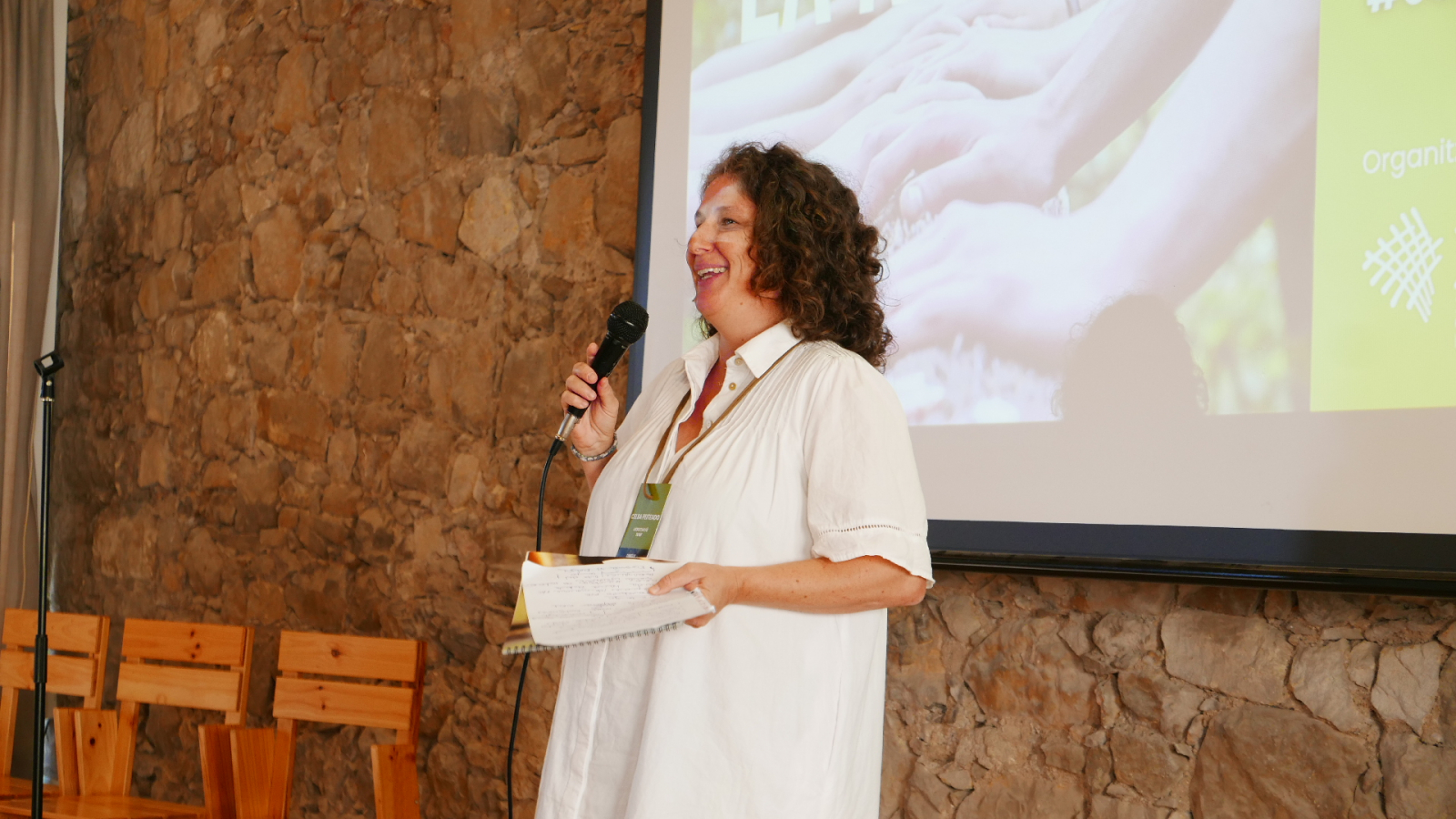
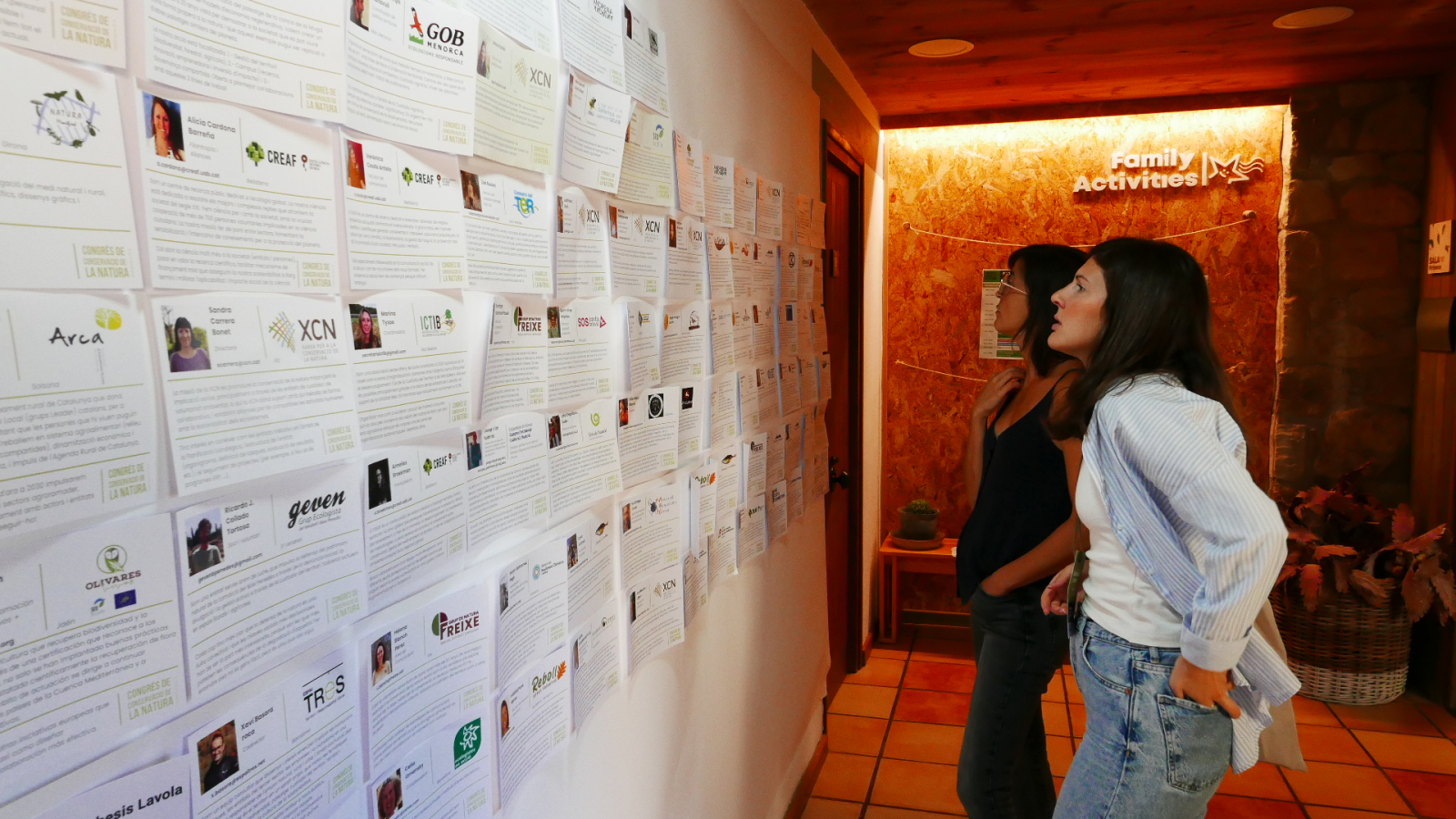
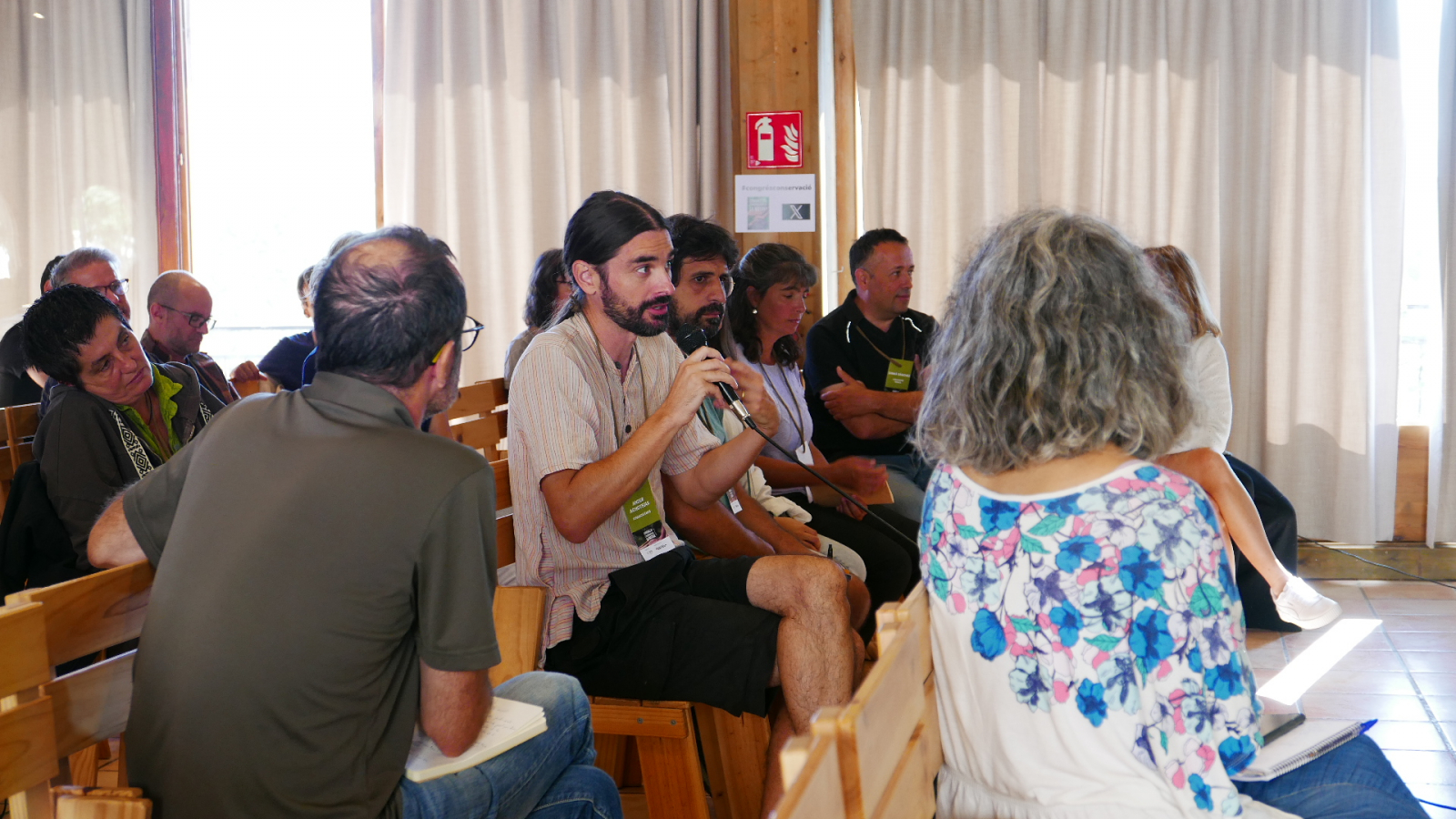
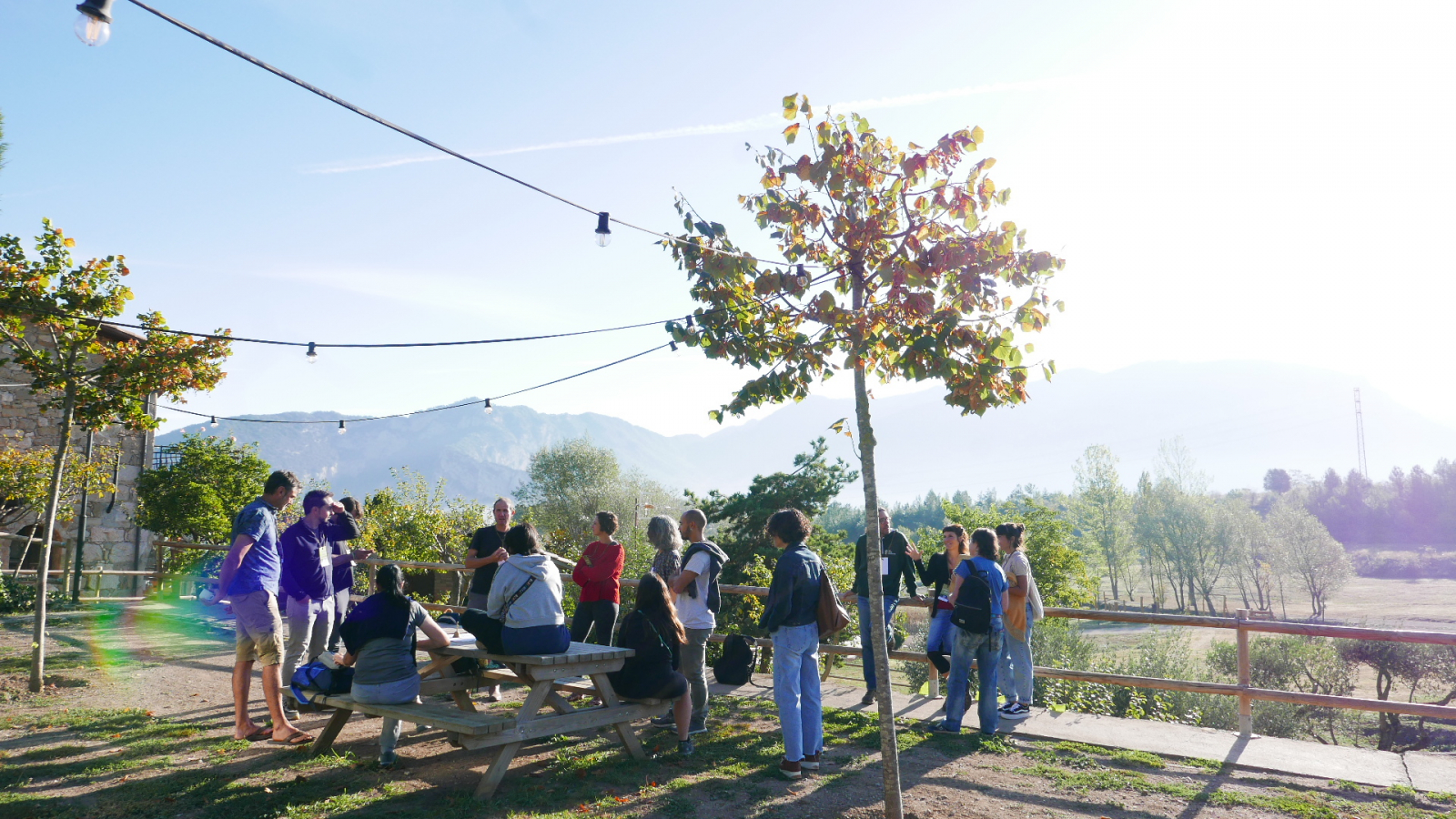
Bioeconomy
GOB Menorca is a successful example of land stewardship. Almost the 10% of rural areas from the island have a stewardship contract, which represents around 4,000 ha. Miquel Camps highlights the need for a new conservation perspective: “Protected land policies are not enough; public protection is not sufficient. Private initiatives must be involved to meet conservation goals. We can do this nowadays by combining current innovation with traditional knowledge”.
Rewilding
Pablo Shapiro, from Rewilding Spain, shared their rewilding experience in the Southern Iberian Chain, a mountain range boasting diverse, dramatic landscapes and rich biodiversity included in the provinces of Guadalajara, Cuenca, and Teruel. A long-term initiative that wants to have a big socioeconomic impact in this marginalized territory. The initiative relies on 5 pillars: the restoration of trophic chains (by introducing the cinereous vulture and the Iberian lynx and studying their impact); forest management (creating mature forests reserves); stream restoration; socioeconomic development; and community participation and communication.
Agroecology
The Olivares Vivos LIFE project, presented by Paula Martín from SEO/BirdLife, aims to provide the consumers the opportunity to select products that promote biodiversity recovering and improving the living conditions of rural communities. An “Olivares Vivos” certification has been created to boost added value from biodiversity restoration and first of its kind in Europe to provide scientific evidence of its impact.
Thanks to this project, the largest study so far on olive grove biodiversity was carried out, over 6 years, on 40 farms, with more than 590,000 biodiversity records (birds, ants, pollinators, herbaceous and woody). This allowed to value ecosystem services and their evolution over time.
Extensive livestock farming
Laia Batalla, representative of the School of Shepherds and the Platform for Extensive Livestock, outlined the benefits that extensive livestock farming provides and the challenges it faces: the low economic profitability, the competition of intensive livestock farming induced by current agricultural policies (CAP), the lack of umbrella organizations, the difficulties of generational replacement due to the lack of opportunities, the conflict with wildlife, the difficulty of accessing land, the lack of training options or the lack of coordination between administrations and sectoral policies. Faced with this, some of the actions proposed, and included in the Strategic Plan for extensive livestock in Catalonia 2021-2030, are de-bureaucratization, public procurement or the differentiation of production through certification systems.
River restoration
Josu Elso, member of the fisheries management area of the company “Gestión Ambiental de Navarra”, presented the LIFE Irekibai and Kantauribai projects, which aim to restore river connectivity and reduce fauna mortality to improve the conservation status of the species linked to the fluvial ecosystem in 15 Natura 2000 areas of the Basque Country.
Conservation of the coast
The “Asociación de Naturalistas del Sur-Este (ANSE)” celebrates 50 years of history this 2023, engaging 950 members and managed by 20 employees. It is a pioneering entity in land custody in Spain and known mainly for its work in defence of nature. Its representative, Pedro García, has shared some of the conservation actions they carry out, such as the organization of training in organic agriculture for technicians from irrigation communities, the recovery of dunes, or the monitoring of marine mammals and the collection of plastics with a salvaged boat.
Humour, music, and nocturnal amphibians
In addition to the presentations, the Congress also organised fun and festive spaces for networking among the attendees, such as Godai Garcia’s humorous show, the covers concert by Els Tets, or a night outing around the accommodation with the Catalan Society of Herpetology, where we discovered curiosities about the amphibians and reptiles of Catalonia.
Visit to ADEFFA, an organization that recovers the native fauna and flora of the territory
To finalise the Congress, we visited the Masia de Camadoca, headquarters of ADEFFA, an entity located in Santa Maria de Merlès that develops conservation projects for native fauna and flora and environmental education activities to raise public awareness of the problems which faces biodiversity, such as the increase in invasive exotic species, among others. At the end of the day, two bullfrogs were released that were recovered at the centre and were able to return to their habitat.

